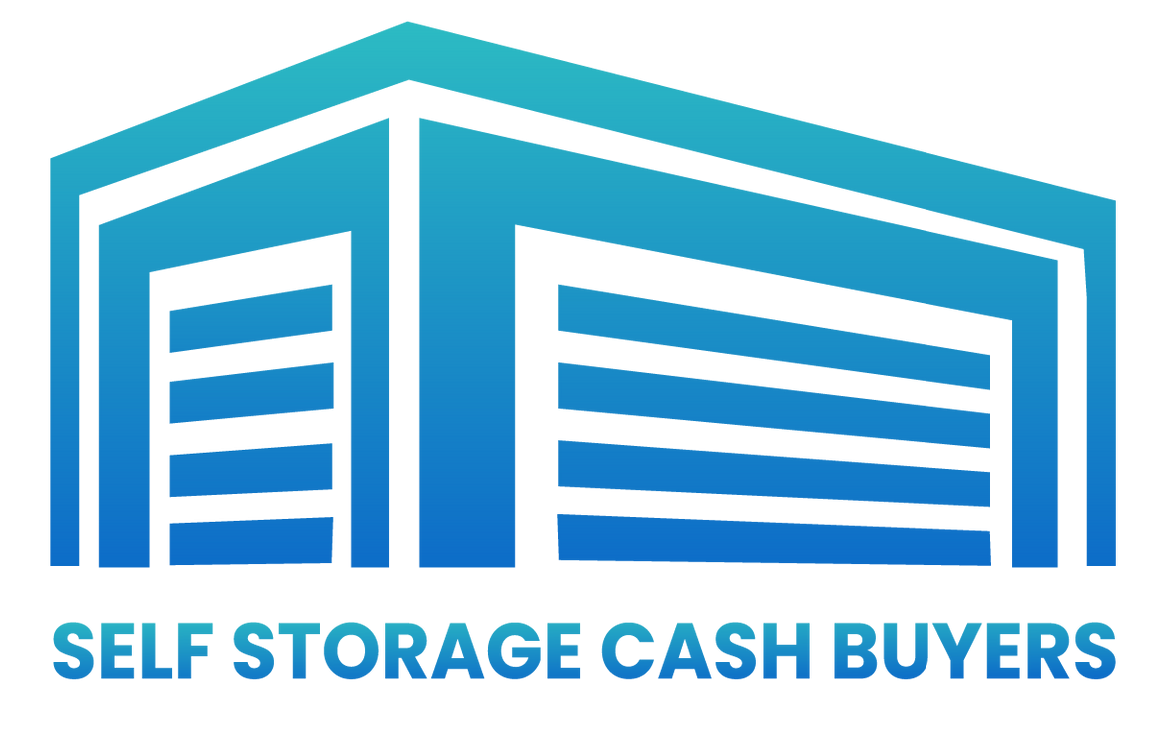The Ultimate Guide for Starting a Self Storage Business
Published on December 14, 2023
Nick Stevens
AUTHOR
Free Offer Form
There's remarkable growth in the self-storage industry — and the trends aren't merely coincidental.
Our homes and businesses are accumulating more and more belongings, outgrowing our available square footage.
With that, the demand for secure and accessible storage options has surged, creating the perfect profitable business opportunity for entrepreneurs.
If this is a business idea you'd like to turn into reality, keep reading. We'll talk about the steps and some helpful tips to start a self-storage business.
Understanding the Self-Storage Business
In this fast-paced consumerist world, space is no longer just a luxury but also a necessity. The self-storage industry has emerged as a practical solution.
What Is a Self-Storage Business?
Also known as a self-storage unit or facility, a self-storage business is an establishment that provides spaces or units for temporary or long-term storage.
These self-storage units are typically rented out every month and at a per-square-foot price.
Self-storage has become a secure and convenient solution for storing items that individuals and businesses wouldn't have the space for at homes or offices.
The Growth and Potential of the Self-Storage Industry
These key factors have contributed to the expansion of the self-storage industry.
- Life transitions like moving, renovating, and decluttering demand temporary storage of personal belongings.
- With the rapid trend of urbanization, people are now living in smaller spaces, needing off-site storage.
- Many businesses require additional space to store inventory, documents, or equipment.
- Self-storage facilities offer secure, climate-controlled spaces with 24/7 access.
- Downturns in the economy can lead businesses to downsize or consolidate, temporarily storing inventory and equipment.
- With the rise of e-commerce, online retailers need to store their inventory in off-site storage units.
The Benefits and Challenges of Starting a Self-Storage Business
Starting a self-storage business can be a rewarding endeavor. Understanding its benefits and challenges is crucial for any entrepreneur who wants to make money.
Some of the benefits you'll experience are:
- Consistent rental income, since many tenants stay for extended periods.
- Self-storage operations have relatively low ongoing expenses.
- There is an opportunity for scalability as the demand for storage space continues to grow.
- Self-storage properties are attractive long-term investments as they tend to appreciate over time.
- Self-storage facilities serve a broad customer base.
Meanwhile, some challenges to be ready for are:
- The industry's popularity has led to increased competition.
- Self-storage units may be subject to varying zoning and building regulations depending on location.
- A lot of security measures require investment.
- Effective marketing and day-to-day management are costly yet essential for success.
- Economic downturns can impact occupancy rates, affecting revenue.
Market Research and Planning
Business planning is a crucial first step — and you can put that into writing through a credible business plan for a more solid blueprint.
When challenges and opportunities arise throughout your business journey, always refer to your business plan.
Identifying the Target Market
If you know who your prospective tenants are, you can tailor your services and marketing efforts. We can divide your potential customers into four groups.
- Residential - Individuals or families often require storage when moving, downsizing, or renovating their homes. Identify residential areas with high mobility and population density.
- Commercial - Businesses often require storage space for excess inventory, documents, and equipment. Consider proximity to business districts and industrial areas.
- Students - Some students seek temporary storage during school breaks. Consider opening your storage facility in areas with universities or colleges.
- Seasonal users - Some customers may only require storage during specific seasons, like storing recreational equipment during the off-season.
Analyzing the Competition
Knowing the strengths and weaknesses of other self-storage businesses can also give you clues on what to do and not do with your business.
- Evaluate the proximity of competing self-storage facilities. Make sure to choose a convenient location.
- Analyze the competitor's pricing structures and services offered. Competitive pricing and new services can set you apart.
- Study the competitors' marketing tactics. See where you can differentiate yourself and make a lasting impact through branding.
- Study the competitors' online reviews and customer feedback. Addressing common concerns can give you an edge.
Creating a Business Plan for a Self-Storage Business
For a successful self-storage business to work, it needs a business plan. Here are the essential components.
- Executive summary - Vision, mission, and the unique value you bring to the market
- Market analysis - Target market, its size, and growth potential
- Business model - Facility's size, location, types of storage units you plan to offer, pricing strategies, and any additional services like climate control or security features
- Marketing and sales strategy - Online and offline strategies to attract and retain customers
- Financial projections - Financial forecasts on self-storage operating expenses, startup costs, net operating income projections, and a break-even analysis
- Operations plan - Day-to-day operations, including staffing, security measures, and maintenance protocols
Legal and Financial Considerations
As new business owners, you need to establish your legal entity and apply for an employer identification number.
This is necessary to build a strong foundation for your self-storage business and safeguard its long-term success.
Legal Requirements for Starting a Self-Storage Business
Comply with these key legal requirements to avoid potential legal issues down the road.
- Permits or variances are required by local zoning regulations.
- Decide on an ownership structure for your storage facility. You may register your business as a sole proprietorship, limited liability company, or corporation.
- Rental agreements and leases should outline the terms, conditions, and responsibilities of both the lessor and tenant.
- Make sure to comply with state and federal self-storage laws — including lien laws, especially when dealing with delinquent tenants and auctioning their belongings.
- Get ample business insurance coverage. Storage is such a business that may involve damage due to accidents, theft, or other unforeseen events.
- Be aware of labor laws — including wage and hour regulations, and ensure compliance with employment laws.
- Pay for property taxes, sales tax, and income tax.
Financing Options for a Self-Storage Business
When you plan to open a storage unit business, you'll need a business bank account. A business credit card can also help you with company expenses.
However, there are other ways to fund your business, like the following.
Personal Funds - Personal savings or assets offer full control but also carry personal financial risk. Make sure to transfer the funds to your business bank account to separate your interests from your business.
Loans - You can also use traditional bank loans, Small Business Administration (SBA) loans, or commercial loans for funding.
External Investors - Private investors, venture capitalists, or crowdfunding platforms may be interested in funding your self-storage business in exchange for equity or a share of the profits.
Insurance and Risk Management for a Self-Storage Business
Business plans should stipulate insurance costs for self-storage facilities. Self-storage units should be covered for:
- Property insurance - To cover damage or loss due to fire, theft, vandalism, or natural disasters.
- Liability insurance - To protect your business from legal claims in case of accidents or injuries that occur on your premises.
Finding the Right Location

Choosing the right location for your storage unit business lets it thrive since you're offering the right services to the right people.
Factors to Consider When Choosing a Location for a Self-Storage Business
When you consider self-storage business investment, you'll realize it's no small amount.
With location a defining factor in the success of self-storage businesses, it's crucial to carefully consider the following factors:
- Demographics - Knowing a location's population, income levels, and residential mobility can help you develop the right unit mix and rates for a profitable enterprise.
- Competition - A saturated market may require you to differentiate your offerings or seek underserved niches.
- Accessibility and visibility - Choose a location with easy access, like areas near major roads, highways, and residential areas. A location that provides visibility and signage opportunities is a plus.
- Security - Check the neighborhood's crime rates to help you consider how many additional security measures you need.
- Size and layout - Evaluate the layout of the lot or building to ensure it can accommodate the number and size of storage units you plan to offer.
Evaluating Potential Locations for a Self-Storage Business
Once you've identified potential locations for your storage unit business, it's essential to evaluate them thoroughly. You can start by visiting each location in person. Assess its condition, accessibility, and safety.
Make sure to verify the availability of utilities like water, electricity, and sewer systems too.
We also recommend performing feasibility studies to check the demand for storage space and a cost analysis of the total cost to build.
The results of your studies and evaluation should help you determine which business location is the most promising and profitable. Afterward, drawing a unit mix and pricing should be relatively easy.
Negotiating Lease or Purchase Agreements for a Self-Storage Facility
Big and small businesses alike need to deal with some real estate business.
Once you've chosen your location, determine whether you'll lease or purchase the property.
If you're leasing the property, carefully review and negotiate the lease terms, including rent, lease duration, and renewal options. If you're buying the property, negotiate the purchase price and terms.
During this period, we highly advise hiring a real estate agent or attorney to assist you with proper negotiations.
Building and Designing a Self-Storage Facility
Building and designing your ideal self-storage facility requires careful planning, attention to detail, and the right technology. By focusing on these aspects, you can create a storage unit business that stands out.
Design Considerations for a Self-Storage Facility
The design of your self-storage facility plays a crucial role in attracting and retaining customers while ensuring operational efficiency. Here are key design considerations.
- Unit types and sizes - Are you offering standard units, climate-controlled units, or specialty units for items like vehicles or wine storage? Also, consider the ideal cost per square foot of the storage unit.
- Layout and unit accessibility - Optimize the property layout to maximize the number of units. During cost planning, determining the efficient cost per square foot of development helps too.
- Climate control - Incorporate HVAC systems and insulation in your design.
- Aesthetic appeal - Pay attention to the facility's curb appeal and branding to attract more customers.
- Office and retail space - Include an on-site office and retail space where customers can inquire about rentals, purchase packing supplies, and access customer service.
- Accessibility - Comply with accessibility standards by including ramps and parking spaces for people with disabilities.
Construction and Renovation Process for a Self-Storage Facility
Constructing a new self-storage facility or renovating an existing facility involves several steps:
- Clear the site, address any environmental concerns, and prepare the land for construction.
- Finalize the design, obtain the necessary permits, and comply with local building codes.
- Begin construction. This includes building storage units, installing security systems, and creating office and retail spaces.
- Set up utilities like water, electricity, and sewage systems. If you are renovating an existing facility, ensure these utilities are functioning.
- Schedule inspections for your storage unit business. Ensure it meets all safety and code requirements.
Equipment and Technology for a Self-Storage Facility
Making a good self-storage facility involves installing the right equipment and technology to keep it running safely and conveniently. These include:
- Access control systems - Allow tenants to access their units while ensuring unauthorized individuals are kept out
- Surveillance cameras - Monitor the facility 24/7, deter theft, and provide evidence in case of incidents
- Unit alarms - Provide an extra layer of security for tenants
- Management software - Self-storage management software options streamline operations, manage rentals, track payments, and communicate with tenants
- Payment and reservation systems - Offer online payment and reservation options
- Inventory management - Tracks unit occupancy and manages inventory
- Mobile apps - Allow tenants to access their accounts, make payments, and receive facility updates
- Website and online booking - Where potential tenants can learn about your facility and reserve units online
Marketing and Promoting a Self-Storage Business
When developing your marketing strategy, remember your commitment to customer loyalty and retention. These should help you establish a strong presence in the industry and ensure sustained growth.
Developing a Marketing Strategy
Here's how to develop marketing and sales strategies for effective business development:
- Define and understand who your ideal customers are, and tailor your efforts accordingly.
- Conduct a SWOT (Strengths, Weaknesses, Opportunities, Threats) analysis to identify the unique selling point of your storage unit and areas that need improvement.
- Establish specific, measurable, and time-bound marketing objectives. For example, you might aim to increase occupancy rates by a certain percentage within six months.
- Develop a strong brand identity that reflects your facility's values.
- Define your marketing mix, including product, rental rates, location, and marketing tactics.
Online and Offline Marketing Tactics
Effective marketing involves a mix of online and offline tactics.
For online marketing, you can follow the tips below.
- Apply search engine optimization (SEO) on your self-storage business website to improve organic search rankings.
- Run targeted ads on your social media accounts like Facebook and Instagram.
- List your storage businesses on online directories like Yelp and Yellow Pages.
- Encourage satisfied customers to leave positive reviews on platforms like Google, Yelp, and Trustpilot.
- Run Google Ads campaigns to appear in relevant search results.
Meanwhile, for offline marketing, below are some things to try.
- Set up a business phone system.
- Network with local businesses and real estate agencies.
- Advertise through newspapers and magazines.
- Send postcards or brochures to your targeted local market.
- Sponsor or participate in local events, charities, or community organizations.
- Put up eye-catching signage at your facility's location to attract passing traffic.
Building Customer Loyalty and Retention
Aside from attracting new potential customers, it's also important to focus on building customer loyalty and retention to ensure your long-term success. Here is what you can do.
- When inquiries arise, answer promptly and professionally. When a customer gives feedback, improve based on their suggestions. Customers desire exceptional customer service.
- Show appreciation to loyal tenants with discounts, incentives, or small tokens of gratitude. You can even offer a flexible occupancy rate to accommodate changing needs or as a loyalty program reward.
- Stay in touch with tenants through email newsletters, informing them about promotions, facility updates, and security enhancements. Emphasize the security measures in place at your facility to reassure customers that their belongings are safe.

Managing and Operating a Self-Storage Business
There are a lot of benefits of automating self-storage operations, such as convenience.
However, employing staff, imposing security measures, and other operational practices are also some of the essentials of operating a self-storage business that will last long.
Staffing and Training
Here are the steps to effective staffing and training:
- Determine how many staff members you need based on the size of your facility and expected traffic. This may include a facility manager and staff for the office, security, and maintenance.
- Select and hire those with excellent customer service skills, are reliable and trustworthy, and have strong attention to detail.
- Provide comprehensive training to staff members. They should be knowledgeable about your facility, policies, and services and able to assist tenants with their inquiries and needs.
- Ensure staff members can execute security measures, including access control, surveillance system operation, and emergency procedures.
- Equip sales staff with the skills needed to effectively market and sell storage units. They should be knowledgeable about pricing, promotions, and the unique benefits of using your facility.
Security and Safety Measures
You should think of enhancing your storage unit's security since it encourages tenants to trust your business and stay loyal to your service. Consider the following safety measures:
- Implement a secure access control system per storage unit that allows only authorized individuals to enter the facility. This often includes gate codes, access cards, or biometric systems.
- Install high-quality surveillance cameras throughout the storage facility, covering every square foot.
- Keep the facility well-lit at all times to deter criminal activity.
- Install alarms on individual storage units to deter theft or unauthorized access. These alarms can also notify staff or security personnel in case of a breach.
- Encourage every tenant to use a high-quality lock on their storage unit and advise against sharing keys or access codes.
- Implement fire safety measures, including smoke detectors and fire extinguishers.
- Develop emergency response plans for natural disasters, fires, or other unexpected events.
Best Practices for Managing a Self-Storage Business
Managing a successful self-storage business involves a combination of operational excellence and customer service. Here are some of the best practices.
- Establish clear and transparent rental policies, including storage space rates, payment terms, and access hours.
- Screen tenants thoroughly to minimize the risk of delinquent payments.
- Establish efficient facility management and maintenance to ensure the property is clean and safe at all times.
- Utilize self-storage management software to streamline rental processes, payment collection, and customer communication.
- Continuously market your storage facilities to attract new tenants. Also, offer occupancy rate promotions or referral incentives to existing tenants.
Expanding and Scaling a Self-Storage Business
Scaling a big or small business is an exciting endeavor! When done effectively, it can lead to significant business growth and success.
Strategies for Expanding a Self-Storage Business
Expanding your self-storage business requires careful planning and strategic execution. Here are some tips to try.
- Conduct market research and look for regions experiencing population growth, urbanization, or increased commercial activity. These have promising demand for storage facilities.
- Acquiring an existing self-storage facility can be a faster way to expand. However, if the situation is favorable, you may also consider constructing new self-storage facilities in underserved areas.
- Explore franchising opportunities if your business has a successful and replicable model. Franchising can help expand your brand without the need for heavy capitalization.
Acquiring and Managing Multiple Self-Storage Facilities
Managing multiple storage facilities is no easy feat! When you're done buying a self-storage facility and have continuously grown your small business into an empire, you'll need a different set of skills.
Here's how to approach it.
- Use a centralized management system to oversee every existing self-storage facility you have. This includes customer service, marketing, maintenance, and an accounting system.
- You can even use self-storage management software to monitor and manage multiple locations remotely. This software should provide real-time data on occupancy rates, revenue, and security.
- Implement standardized and consistent operational procedures across all facilities.
Challenges and Opportunities in Scaling a Self-Storage Business
Scaling a self-storage business offers both challenges and opportunities. Understanding these can help you navigate your business better.
Here are some challenges you can expect.
- Increased competition may lead to pricing pressures.
- Managing many facilities across different localities can involve complex regulatory compliance issues.
- Maintaining consistent quality service among facilities can be challenging.
- Scaling often requires substantial capital investment.
However, there are also opportunities you can try to grab.
- Scaling allows you to diversify revenue sources. You can tap into different markets or offer new services.
- As you expand, you can achieve economies of scale through centralized management and bulk purchasing.
- A growing brand can gain stronger recognition.
- Multiple facilities can generate higher positive cash flow and overall profitability.
Frequently Asked Questions
Learn more about how to start a self-storage business here.
What Are the Legal Requirements for Starting a Self-Storage Business?
Starting a self-storage business involves several legal requirements. These include:
- Ensuring zoning compliance and acquiring permits from local authorities
- Registering the business structure of your legal entity (sole proprietorship, LLC, or corporation)
- Drafting contracts and leases for tenants
- Compliance with self-storage laws, including lien laws on tenant delinquency and unit auctions
How Much Does It Cost to Start a Self-Storage Business?
The costs involved in building a self-storage facility vary widely depending on factors such as location, facility size, construction costs, and operating expenses.
For a single-story self-storage facility, the business costs of construction will range from $25-$40 per square foot.
Naturally, the price per square foot for multi-story structures will be higher due to the land costs. You can pay between $42-$70 per square foot for a high-rise apartment.
A huge storage unit business with at least 70,000 square feet will cost at least $50-$70 per square foot to build, not including land costs.
What Are the Key Factors to Consider When Choosing a Location for a Self-Storage Facility?
As mentioned above, some key factors to consider when choosing locations for self-storage facilities include:
- Demographics
- Competition
- Accessibility and visibility
- Security
- Size and Layout
How Can I Market and Promote My Self-Storage Business Effectively?
Online tactics are some of the most effective marketing strategies nowadays. These include:
- A user-friendly website with information on facility, pricing, and online booking options
- Blog posts and videos
- Social media engagement
- Pay-per-click (PPC) advertising on search engines and social media
- Email marketing through newsletters, promotions, and updates to customers
- Optimize your website for local search results and maintain a Google My Business listing
What Are the Best Practices for Managing a Self-Storage Business?
As mentioned above, some best practices for managing a self-storage company include:
- Clear policies
- Tenant screening
- Regular maintenance
- Technology integration
- Marketing and branding
- Financial management
- Customer service
- Security measures
Conclusion
Starting your own self-storage business can be a promising and profitable venture.
From carving a business plan and building your facility to crafting marketing strategies and managing with finesse, you've got to go forth with confidence and ambition.
Your journey to becoming a self-storage mogul begins here!


